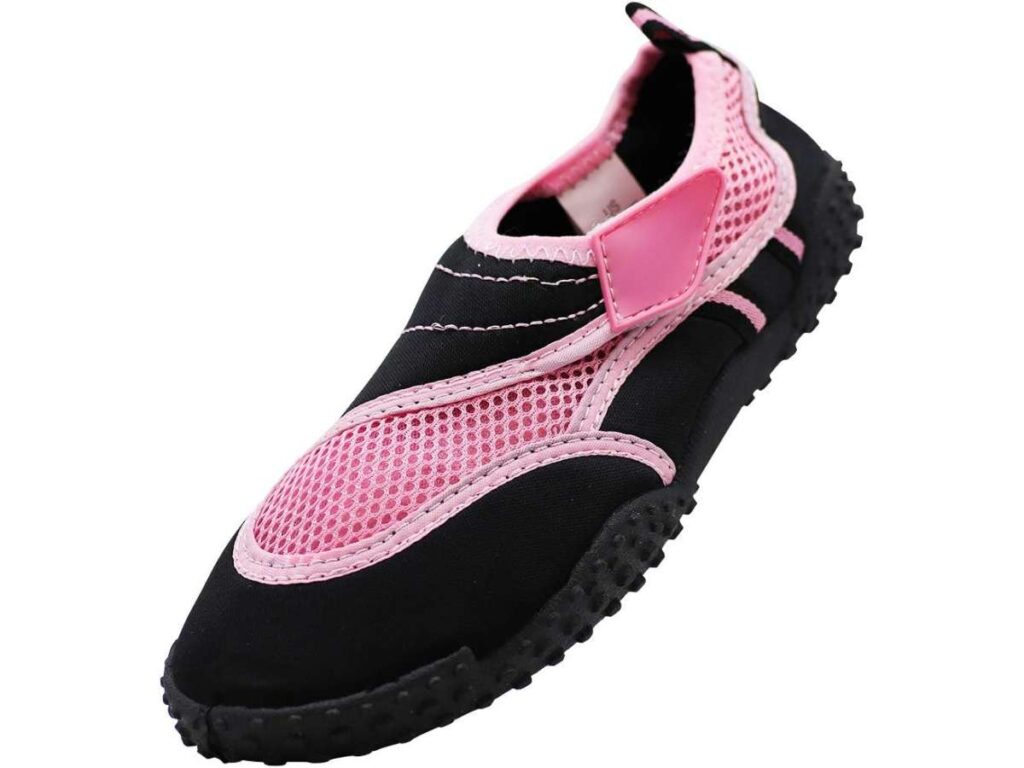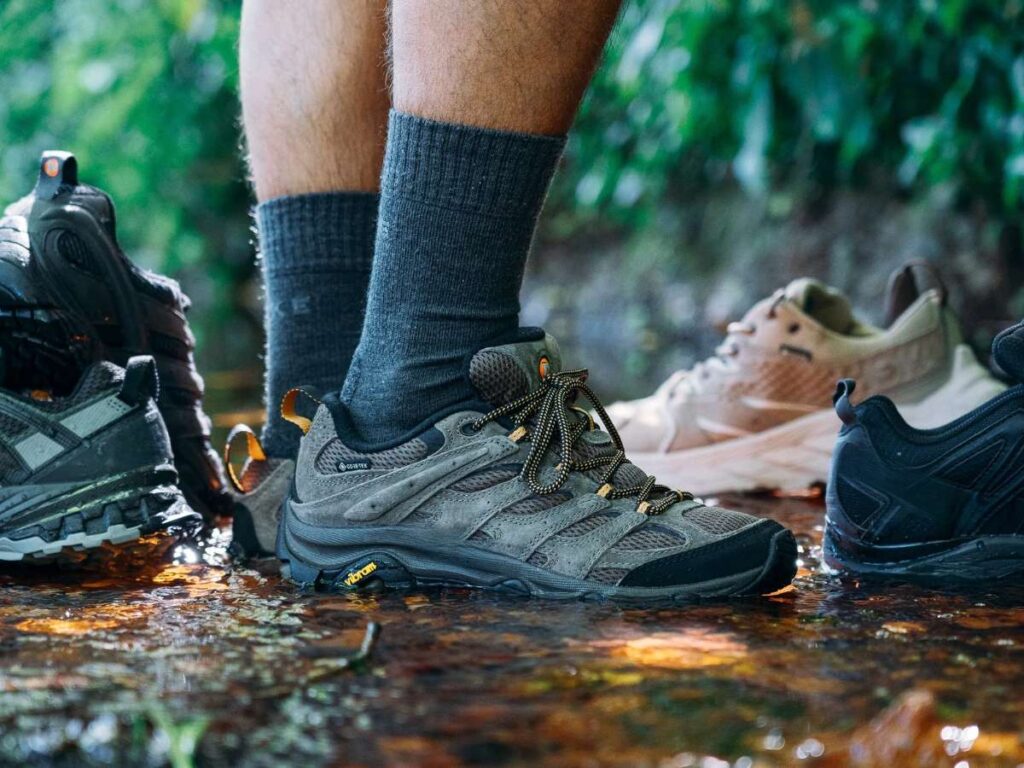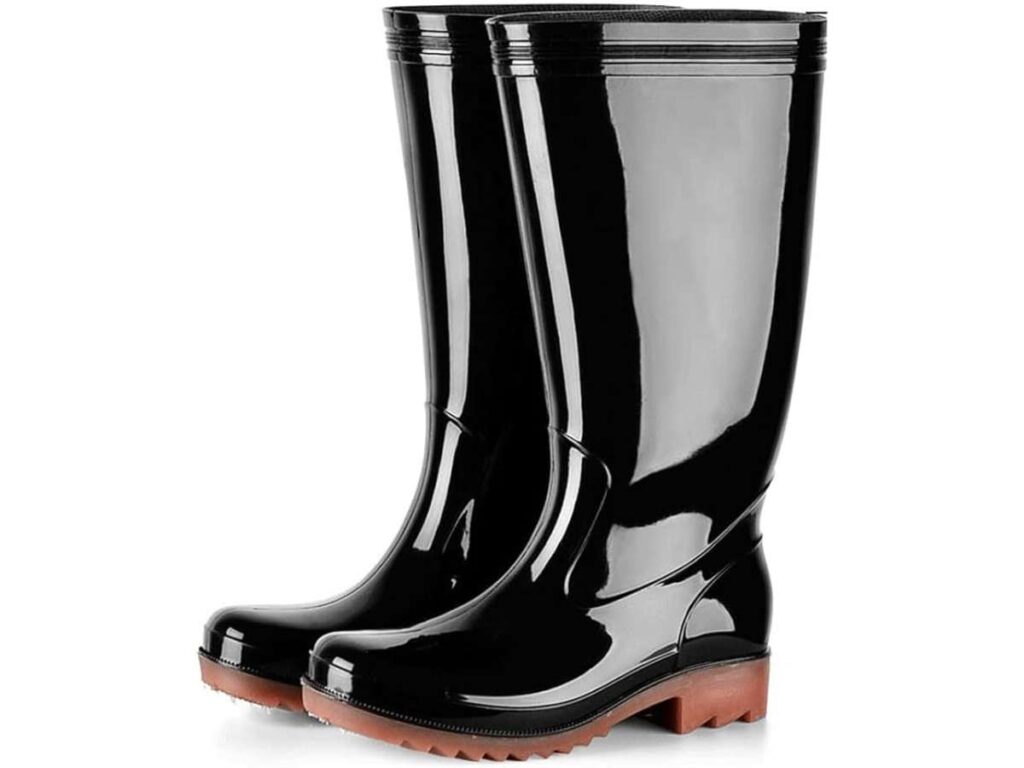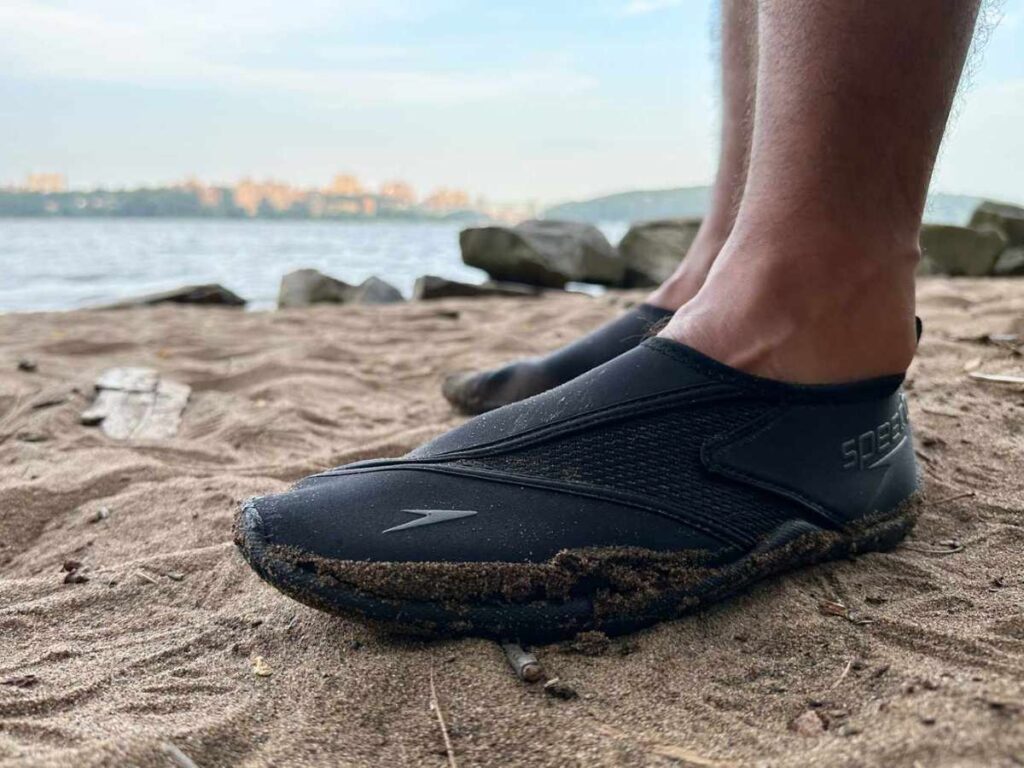How Do Water Shoes Work?

Author: Andy Hong | Founder at XDS
Hi, I'm Andy Hong, here to share my expertise in footwear manufacturing with you.
How Do Water Shoes Work?
Table of Contents
How do water shoes work? This question had me curious because I wasn’t entirely sure how these shoes function in both wet and dry environments.
To figure it out, I researched their materials, how they’re made, and how they perform in wet conditions. I also checked real-world reviews and insights from regular users.
After extensive research, I found that water shoes combine lightweight, quick-drying materials with slip-resistant soles to offer reliable protection, comfort, and stability in wet and slippery conditions.
In this guide, we’ll look at how water shoes work, their benefits, and the best features to consider. You’ll also get tips on choosing the right pair and keeping them in good shape.
Let’s dive in!
1. What are Water Shoes?
Water shoes are a type of footwear specially designed for use in wet or slippery environments. They are lightweight, made from materials that dry quickly, and often include mesh panels to let water flow out easily. Unlike regular shoes, water shoes have sturdy soles with a good grip to help prevent slipping on wet or uneven surfaces.
These shoes are not just for water activities like swimming or kayaking—they also protect feet from sharp rocks, hot sand, or other hazards you might find outdoors. Their design focuses on keeping feet safe and comfortable in both water and on land. AT XDS we offer a range of high-quality water shoes designed to meet these needs, combining safety, comfort, and durability for various environments.

2. How Water Shoes Work
Water shoes are designed to perform effectively in wet and slippery environments by using specific materials and features that work together. Here’s how they function:
- Water Flow Management: The design of water shoes allows water to move in and out easily. Drainage holes and mesh panels in the upper part of the shoe prevent water from getting trapped, helping to keep the shoes lightweight and practical during extended use.
- Stability on Slippery Surfaces: The soles of water shoes are equipped with grooves or patterns that provide grip on wet or uneven surfaces. This feature helps maintain stability and reduces the likelihood of slipping, which is essential for safety in challenging conditions.
- Material Efficiency: Water shoes use lightweight and quick-drying materials such as mesh or neoprene. These materials help minimize water retention and make the shoes ready for reuse in less time, a key consideration for operations requiring frequent use.
- Comfort and Airflow: Breathable fabrics promote air circulation, keeping the feet comfortable even in humid or wet conditions. This feature supports long-term use without causing discomfort or overheating.
3. Benefits of Using Water Shoes
Water shoes are not just for recreational use—they offer practical benefits that make them valuable in professional and outdoor settings. Here are the key benefits:
- Foot Protection in Harsh Environments: Water shoes act as a barrier against hazards such as sharp rocks, debris, and hot surfaces. This reduces the risk of injuries, making them essential for workers or activities that require reliable foot protection.
- Improved Stability and Traction: Equipped with slip-resistant soles, water shoes provide a firm grip on wet or uneven surfaces. This stability supports better performance and minimizes the chance of falls, especially in environments where safety is critical.
- Reducing Risk of Slips and Injuries: By combining durable soles and secure fits, water shoes help lower the likelihood of workplace injuries or accidents caused by slippery or unstable terrain.
- Comfort in Wet and Dry Conditions: Their quick-drying materials and drainage features keep feet comfortable, even when transitioning between water and dry land. This versatility makes them an efficient choice for demanding tasks in diverse conditions.
4. Key Features of Water Shoes
Water shoes are specially designed to perform well in wet environments and challenging terrains. They incorporate materials and construction techniques that set them apart from regular footwear. Below are the key features that make water shoes a practical and valuable choice:
Quick-Drying Materials
Water shoes are made from fabrics that dry quickly after being exposed to water. This helps keep feet comfortable and prevents prolonged dampness, which could lead to irritation or discomfort.
Slip-Resistant Soles
The soles of water shoes are crafted with specialized patterns and durable materials to offer excellent grip on wet, slippery, or uneven surfaces. This feature helps maintain stability in various conditions.
Drainage Systems
Many water shoes come with built-in drainage holes or mesh panels that allow water to flow out quickly. This prevents water from pooling inside the shoe, making them lighter and more efficient in wet environments.
Lightweight Construction
Water shoes are designed to be lightweight, which helps reduce fatigue during extended use. This feature is particularly useful for activities or tasks that involve both water and land movement.
Durable Protection
Reinforced toes or sturdy materials provide a layer of protection against sharp objects like rocks or debris. This helps reduce the risk of injury in outdoor or professional settings.
5. Water Shoes for Different Activities
Water shoes are versatile and designed to perform in a variety of activities. Their features make them suitable for both recreational and professional use, offering reliable support and safety in wet or challenging environments. Below are examples of how water shoes are used in different activities:
Water Sports
For activities like kayaking, paddleboarding, or snorkeling, water shoes provide protection from sharp rocks, coral, or debris underfoot. Their slip-resistant soles help maintain stability on wet surfaces, such as boat decks or rocky shores, while the lightweight design allows easy movement in and out of the water.

Hiking in Wet Terrain
When exploring trails that include streams, waterfalls, or wet conditions, water shoes are a reliable option. They offer durability, grip, and quick-drying properties that prevent discomfort from water exposure. Unlike regular hiking boots, they transition seamlessly between wet and dry terrain.

Workplace Use
In industries like fishing, aquaculture, or water-based construction, water shoes protect workers from slippery surfaces and underwater hazards. Their drainage systems keep feet comfortable during long hours in wet conditions, making them ideal for professionals needing safe and practical footwear.

Beach and Coastal Activities
Water shoes are a great choice for walking on sandy beaches, exploring tide pools, or wading in shallow water. They protect feet from sharp shells, hot sand, and unexpected debris while providing comfort and flexibility. According to Future Market Insights, the water shoes market is projected to grow at a CAGR of 3.4% from 2022 to 2032, reflecting their increasing demand for both recreational and practical uses.
Adventure Parks and Camps
In water parks or outdoor adventure camps, water shoes help navigate slippery walkways, pool areas, and wet attractions. Their secure fit and protective design make them suitable for both children and adults in these settings.

6. Common Misconceptions About Water Shoes
Water shoes are often misunderstood, leading to misconceptions about their purpose and functionality. These misunderstandings can limit their potential use or lead to unrealistic expectations. Let’s address some of the most common misconceptions about water shoes:
They’re Only for Swimming
A lot of people think water shoes are just for swimming or water-based sports, but they are much more versatile. They are also ideal for hiking through wet terrain, working in water-related industries, and protecting feet in various outdoor settings.
They Don’t Last Long
Some believe water shoes wear out quickly because they are often exposed to water. In reality, high-quality water shoes are made from durable materials designed to handle regular use in challenging environments, including exposure to water and rough surfaces.
They Can Replace Regular Shoes
While water shoes are great for specific activities, they aren’t a replacement for all types of footwear. For instance, they’re not designed for long-distance running or everyday use on hard, dry surfaces. They are best suited for situations involving wet or mixed terrains.
They Aren’t Comfortable
Some assume that water shoes are uncomfortable because they’re made to handle water. However, modern designs focus on comfort with lightweight materials, cushioned insoles, and flexible construction, making them suitable for extended use.
They’re All the Same
There’s a misconception that all water shoes are built alike. In fact, they vary widely in features like sole design, materials, and intended use. Different styles cater to specific needs, whether it’s for professional environments, water sports, or casual outdoor activities.
7. 5 Water Shoes Maintenance and Care Tips
Taking care of water shoes is important to keep them in good condition and ready for regular use. Proper maintenance helps them last longer and perform well in wet or rugged environments. Here are some simple tips to maintain and care for water shoes:
#1 Clean Them After Each Use
Rinse water shoes thoroughly with fresh water after use, especially if they’ve been exposed to saltwater, mud, or sand. This prevents material damage and stops debris from building up inside the shoes.
#2 Dry Them Properly
Always let water shoes air dry in a well-ventilated area. Avoid leaving them in direct sunlight for extended periods, as this can cause fading or damage to the materials. Stuffing them with paper towels can help absorb excess moisture and maintain their shape.
#3 Remove Dirt and Debris
For deeper cleaning, use a soft brush or cloth to remove dirt from the soles and fabric. A mild soap or detergent can be used to clean tougher spots, but avoid harsh chemicals that could weaken the materials.
#4 Store Them Correctly
Store water shoes in a cool, dry place when not in use. Avoid packing them away while they’re still damp, as this can lead to mold or unpleasant odors.
#5 Inspect for Wear and Tear
Regularly check your water shoes for signs of damage, like worn soles or loose stitching. Addressing small issues early, such as patching a tear or replacing insoles, can prevent bigger problems later.
8. Factors to Consider When Choosing Water Shoes
Selecting the right water shoes for your business involves considering specific factors that cater to the needs of your customers or end-users. These features determine the shoes’ performance, durability, and suitability for different activities. Here’s a guide to help you make the best choice:
Material Quality
Water shoes should be made from durable, quick-drying materials like neoprene or mesh to maintain comfort and functionality. These materials allow water to drain efficiently and help the shoes last longer in challenging conditions. At XDS, we provide water shoes crafted with high-quality materials, making them a dependable choice for businesses supplying footwear for aquaculture or outdoor activities.
Grip and Traction
Providing shoes with excellent grip is crucial for businesses catering to industries with wet or slippery environments. Rubber soles with effective tread patterns reduce slip risks and improve stability. For instance, shoes with deep grooves are ideal for fishing operations on rocky terrains, while flatter tread designs are preferred for smooth surfaces like pool decks or boat docks.
Drainage System
A proper drainage system, such as built-in holes or mesh panels, keeps water shoes lightweight by quickly expelling water. This feature is especially useful for companies offering water shoes for activities like kayaking rentals or water park operations, where functionality is key.
Aesthetic Design
For businesses offering water shoes, appearance can matter just as much as performance. Professional, neutral styles work well for diving schools or industrial clients, while vibrant, eye-catching designs appeal to recreational markets like beachfront shops or activity centers. Combining style and functionality helps broaden customer appeal.
Conclusion
Water shoes are an essential solution for navigating wet environments with comfort, protection, and functionality. Understanding how they work and their benefits can help you make informed decisions for your business needs.
We hope this guide has helped you better understand how water shoes work and their many benefits. If you’re searching for a reliable manufacturer of high-quality water shoes, XDS is here for you. We understand that strict MOQ requirements can be a challenge, which is why we offer flexible options, including minimum orders starting at just 500 pairs for some styles. Contact us today to learn more!
Discover More Options
If you need more options, take a look at our full range of products. You might find just what you need:
Still haven’t found what you’re looking for? Don’t hesitate to contact us; we’re available around the clock to assist you.
Quick Quote
Fill out the form, get the quote in hours!





